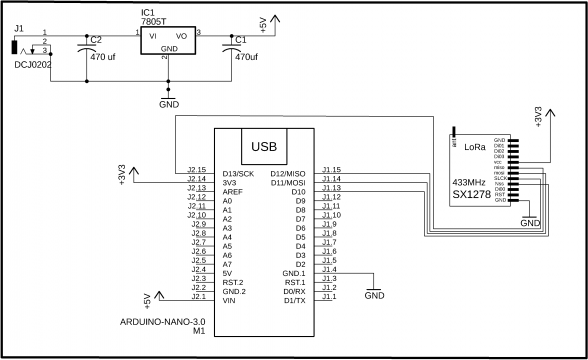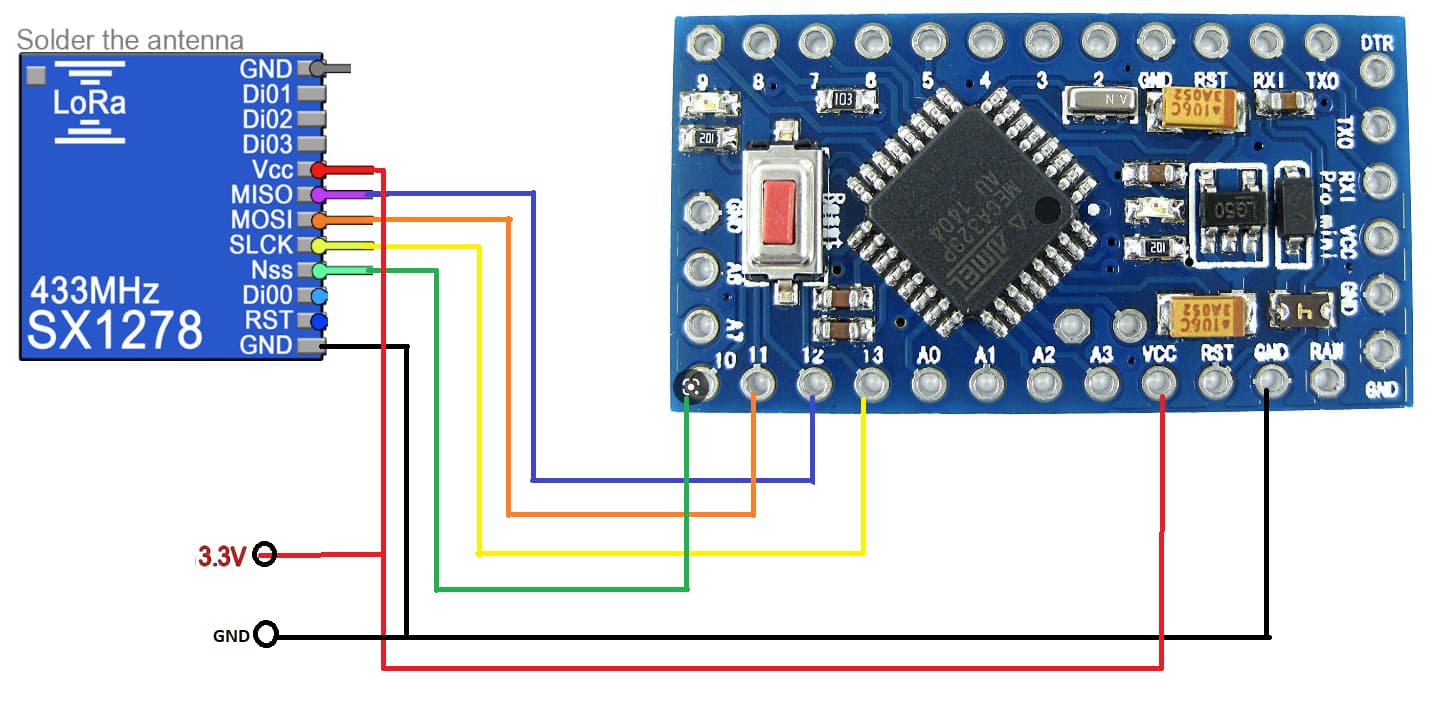Can you provide a picture of the actual board ?
Maybe this one:
Nice, thanks!
Unfortunately a schematic diagram for what is on the board seems not (yet) available.
you can find the board here : https://www.tindie.com/products/IOTMCU/lora-radio-node-v10/ version 868mhz.
Before you ask, the DCDC converter is not the reason. I also make measure on the 3.3V directly with a 3.3V source.
So quite a few more components.
Before you ask, the DCDC converter is not the reason. I also make measure on the 3.3V directly with a 3.3V source.`
So the ‘DCDC converter’ (regulator ?) was removed or otherwise disconnected from the 3.3V supply to the processor and RFM95 when you measured the current ?
No, the DCDC is connected but if I measure current before or behind the DCDC I get the same result.
I would also suggest that unless you want to re-work that board, by removing or replacing the regulator, your never going to get sleep current below (typically) 90uA.
Check out the datasheet of the regulator used …
Hello Andris,
CAn You share Your PCB files for Sigiot low Power LoRa node.
Best regards,
Dejan
Hello,
I have a project with a communication Lora, and different sensors with low consumption.
But with an arduino pro mini + rfm95w, I don’t have enough space on the microcontroller:
text section exceeds available space in board
Le croquis utilise 33216 octets (108%) de l'espace de stockage de programmes. Le maximum est de 30720 octets.
Les variables globales utilisent 1852 octets (90%) de mémoire dynamique, ce qui laisse 196 octets pour les variables locales. Le maximum est de 2048 octets.
Croquis trop gros ; vois http://www.arduino.cc/en/Guide/Troubleshooting#size pour des conseils de réduction.
Erreur de compilation pour la carte Arduino Pro or Pro Mini
I can’t reduce my code. The library use most of the space.
Do you have suggestions for a board with very low consumption and more space than an atmega328p ?
The Nano Every which is an ATmega4809 has the space.
Or if you look at the options for the library you can turn off the Class B support and it may then fit on your Pro Mini - the forum has many questions exactly like this so search & reading may be a quick win.
If your using the Arduino IDE, you can download the core for the NanoEvery\ATmega4809 and check if the program you have (and the sensor libraires used) compiles OK and how much space the entire program uses.
Hello! I have started with PRO NANO and LoRa XL1278 module. Is it possible to put this module in sleep mode (<1 mA) ? In my circuit is always about 20 mA! The connections are like in this page:

Could somebody check the code:
< radacted - do not post files when formatted text works just as well but doesn’t require a download >
This is the TTN forum for discussion on LoRaWAN on TTN/TTI - you are using LoRa. You can get some help on the Arduino forum.
PS, look at the datasheet for the quiescent current of an 7805. And if you are likely to blow up the radio with 5V signals from the Arduino.
No.
Forget it with a Nano in the first place, if you connect the LoRa module to it, say goodbye to the LoRa module, its a 3.3V logic device.
And using a 7805 regulator just makes it worse.
What TTN library are you using ?
Thanks for the fast answers to descartes and LoRa Tracker!
I’m at the beginning - TTN will be the next step.
Sorry, the previous diagram is only for presenting the connections to LoRa module.
I have prepared a more accurate diagram. The power supply is 3.3V.
The MCU is not NANO, but PRO MINI. In normal mode it takes about 5 mA and goes under 1 mA in sleep mode.
The transmitter works already a week, except for the current consumption of the XL1278 module.
< redacted LoRa P2P code >
Note what was mentioned above, your using LoRa point to point code which is off topic here.
This forum is only for the discussion of TTN.
As there are no 433MHz gateways on TTN as there isn’t an agreed channel plan for 433 for Europe, you’ll need some hardware changes.
I think you missed the hint - come back when you are using LoRaWAN on TTN.
PS, I’m pretty sure this is a unique problem, so forum search would be useless …
